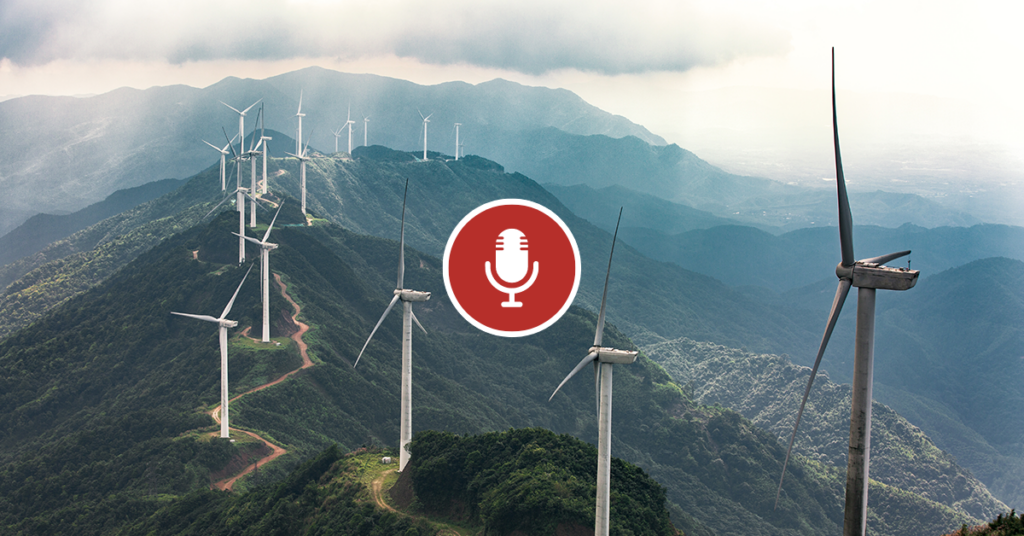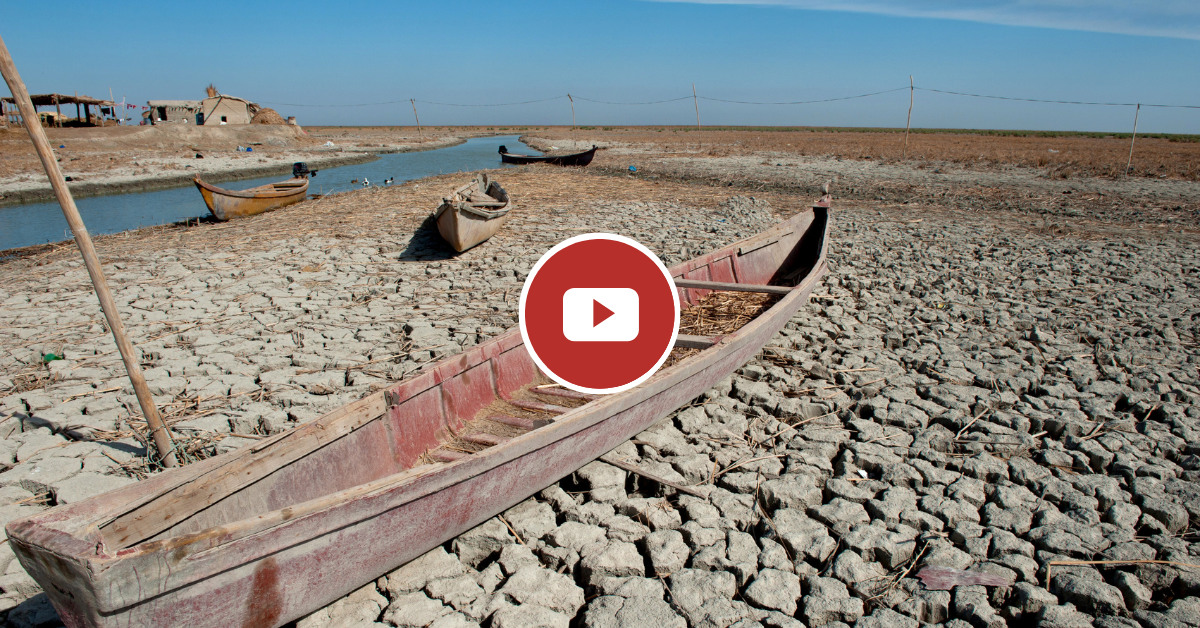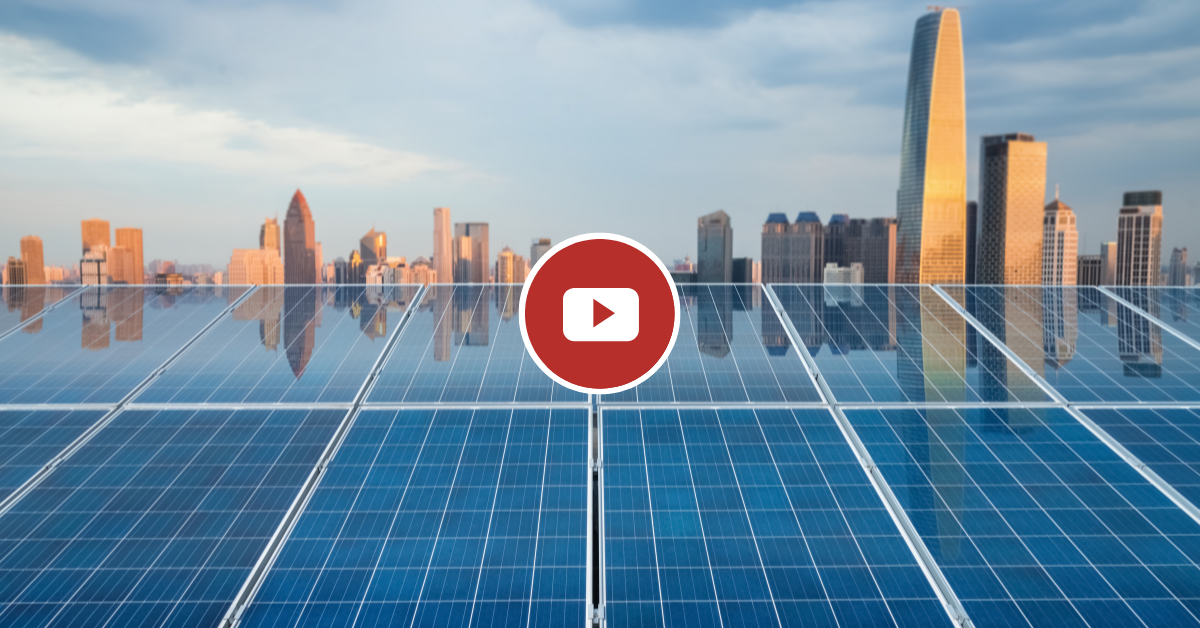Is China ahead of the United States in developing green technology? Amid the tensions of great power competition and climate change, what can the U.S. and China learn from each other when it comes to protecting the environment? In this special edition Earth Day podcast, we pulled the best content from our 2023 Earth Month interview series to answer the most urgent questions on the U.S.-China climate relationship with insights from American and Chinese experts.
You can watch all of our Earth Month content and discover more resources here.
Speakers

Angel Hsu
Angel Hsu is an assistant professor of public policy and the environment at the University of North Carolina-Chapel Hill and holds a Ph.D. in forestry and environmental studies from Yale University. She is the founder of the Data-Driven EnviroLab, an interdisciplinary research group that innovates and applies quantitative approaches to pressing environmental issues. Dr. Hsu previously held appointments at Yale-NUS College in Singapore and the World Resources Institute (WRI) where she led WRI’s efforts to develop corporate greenhouse gas accounting and reporting initiatives in developing countries, including China. Dr. Hsu has provided expert testimony to the US-China Economic Security and Review Commission and is a member of the National Committee on U.S.-China Relations and a Public Intellectual Program Fellow. She holds an M Phil in environmental policy from the University of Cambridge, and a BS in biology and BA in political science from Wake Forest University.

Joanna Lewis
Joanna Lewis is the Provost’s Distinguished Associate Professor of Energy and Environment and director of the Science, Technology and International Affairs Program at Georgetown University. She is also a faculty affiliate in the China Energy Group at the U.S. Department of Energy’s Lawrence Berkeley National Laboratory. Dr. Lewis is the author of Green Innovation in China, and was a lead author of the Intergovernmental Panel on Climate Change’s Fifth Assessment Report published in 2014. She has worked for several governmental and non-governmental organizations, and was a visiting scholar at Tsinghua University, the Woodrow Wilson International Center for Scholars, and the East-West Center. Professor Lewis holds master’s and doctoral degrees in energy and resources from the University of California, Berkeley, and a bachelor’s degree in environmental science and policy from Duke University. She is a fellow of the National Committee’s Public Intellectuals Program.

Zou Ji
Zou Ji has been president of the Energy Foundation China since July 2017. He previously held senior positions in government, academia, and non-governmental organizations. Among his former posts: deputy director general of China’s National Center for Climate Change Strategy and International Cooperation under the National Development and Reform Commission; China’s representative to the United Nations Intergovernmental Committee of Experts on Sustainable Development Financing; and the first China country director of the World Resources Institute.
Dr. Zou was a key member of the Chinese climate negotiation team leading up to the Paris Agreement and is also a contributor to the assessment reports of the Intergovernmental Panel on Climate Change.
Professor Zou received his bachelor’s degree in environmental engineering and master’s in technical economics, both from Tsinghua University, and a Ph.D. in resources and environmental economics from Renmin University. He was a visiting scholar at Harvard and the London School of Economics.

Ma Jun
Ma Jun, founding director, Institute of Public & Environmental Affairs (IPE), led the development and launch of China’s first environmental public database, as well as the Blue Map, a mobile app that visualizes air, water, and soil quality data and tracks the performance of hundreds of thousands of major emitters. In 2020, he led the launch of the Blue Map for Zero Carbon and collaborated with professional organizations to develop regional Carbon Peak and Neutrality Index, as well as Corporate Climate Action Index (CATI).
Mr. Ma was named China’s “Green Person of the Year” and was among TIME Magazine’s World’s 100 Most Influential People (both in 2016). He won the Magsaysay Award (2009), the Goldman Environmental Prize (2012), the Skoll Award for Social Entrepreneurship (2015), and the Asia Society’s Asia Game Changer Award (2022).
Transcript
ELENA SALZMANN: You’re listening to a special Earth Day edition of a podcast by the National Committee on U.S.-China Relations, where we’re answering your questions like, is China ahead of the United States in developing green technology? And what can the U.S. and China learn from each other when it comes to protecting the environment? With top environmental experts from both the U.S. and China.
In this special edition podcast, we’re pulling the best content from our entire Earth Month series of interviews, which covers even more topics relating to U.S.-China climate cooperation, green technology, and China’s environmental protection. You can watch all of our Earth Month content on our YouTube channel, any of our social media accounts, or on our website ncuscr.org. We hope you enjoy this special Earth Day edition of our favorite questions and answers from the experts.
First up is climatologist Angel Hsu, a Public Intellectuals Program Fellow here at the National Committee, Assistant Professor of Public Policy and the Environment at UNC Chapel Hill, and the Founder and Director of the Data-Driven EnviroLab. Professor Angel Hsu, what are the most important environmental issues China faces right now?
ANGEL HSU: Despite the momentous progress China has made to reduce air pollution in major cities and to increase forest cover, amongst other successes, it still faces a number of environmental challenges. For one, if you read the headlines from last summer, China experienced a historic heat wave. It was the worst heat wave that China had ever experienced, I think, in the world, it was the worst heat wave that any country had ever experienced. And this heat wave emphasized the need for China to work even faster to reduce its emissions and bolster alternative sources of clean energy.
During that heat wave, remember, temperatures were over 40 degrees Fahrenheit, and they went on for more than 70 days straight, and it affected a region as wide as 17 provinces and more than 900 million people. These heat waves not only led to high temperatures, but it also caused drought conditions and crippled China’s hydroelectricity production. And remember, hydroelectricity supplies 60% of China’s overall power output.
Well, related to heat and water crises, coal still remains a persistent challenge for China, since it still comprises around 55% of the country’s overall energy mix and generates more than 60% of its electricity. Of course, coal is the most carbon intensive form of energy, at least a huge amount of air pollution. And that causes 1 million premature deaths in China every year. Even though China has set a target for it to become carbon neutral by 2060, it has to eliminate coal and other fossil fuels from its electricity sector by 2050. And despite this target and the road ahead of them, they’re still building more coal fired power plants every day. And coal consumption has not seen meaningful declines, since it is a cheap and readily available source of fuel.
But the good news is that we have all the technologies available today in the form of renewable energy, solar and wind. And China continues to just completely crush benchmarks that it set for itself to continue to install these sources of renewable electricity. And of course, we know that China has been instrumental in making these technologies more affordable and cheaper than conventional fuels for countries across the world.
ELENA SALZMANN: As Angel pointed out, China has made incredible strides in developing green technology to combat these major environmental issues. That brings us to Joanna Lewis, Director of the Science, Technology and International Affairs Program at Georgetown University, National Committee Public Intellectuals Program Fellow, and author of Cooperating for the Climate: Learning from International Partnerships in China’s Clean Energy Sector. She’s an expert in China’s green technology development and manufacturing. Professor Joanna Lewis, how far ahead exactly is China in developing green technology? Is China ahead of the U.S.?
JOANNA LEWIS: China leads the world in the manufacturing and deployment of almost every clean energy technology that you could think of: wind turbines, solar panels, batteries, electric vehicles, and the list goes on. But I think that as China has developed these industries quite rapidly, there have been real investments made in the in the scaling of these technologies as well as in clean energy innovation.
And I think that it remains to be seen whether China is going to not just be the scaler of existing technologies or whether it has the ability to really innovate in the next generation of clean energy technologies that we’re going to need for the low carbon transition. Historically, the technologies that China has really been able to adopt were initially innovated in other countries, primarily Europe or the United States, including the wind turbine and particularly solar photovoltaic technology.
China was able to have that technology transferred and then really scaled up manufacturing at home. And so I think the true test of China’s national innovation system in the clean energy and climate space will be if we see new innovations coming out of China, particularly in the next generation, clean energy technology industries that are going to be, you know, increasingly important in the coming years as countries all over the world scale up their deployment of low carbon technologies.
ELENA SALZMANN: For a closer look into one of those renewable energies where China is racing ahead, we turn to Zou Ji, CEO and President of Energy Foundation China. He previously served as a deputy director general of China’s National Center for Climate Change Strategy and International Cooperation and is a recognized climate expert in China. Professor Zou Ji, do you think there’s potential for the growth of offshore wind in China?
ZOU JI: Very, very huge potential. So let me tell you a very direct story that I experience that in the past two or three years. I remember when Lord Nicholas Stern told me, oh, UK, they reached a normal price of offshore wind power based on their power sector reform. And I felt very curious about that. I said, oh, let’s organize the dialog between China and the UK experts. And then we organized that, it should be in 2020. And then we heard a lot from UK colleagues there.
And one year after I said, oh, let’s organize another dialog, and suddenly I found that the total capacity of offshore wind power in China had become the top one in the world.
And furthermore, with several field trips, I also saw very, very rapid change of the cost, mainly because of the scale of the economy. I mean the size had become higher and higher, especially invited by several leading provinces, the top one or top two GDP provinces, like Guangdong province, Jiangsu Province, and Shandong province together with Zhejiang and Fujian and all those relatively richer provinces, they started the capital investment in offshore.
And furthermore, some of the provinces that I heard of, for example, Jiangsu Province and also Guangdong province, they are considering using offshore wind power to produce green hydrogen with seawater. But certainly, for the moment, they are now in the early stage to have a demo project or pilot project there. But I believe if offshore wind power had become cheaper and cheaper and richer and richer, this will very likely become true for hydrogen production.
ELENA SALZMANN: As our exploration of the U.S.-China climate relationship this Earth Month revealed, the environment is one area in which both countries share common interests. From developing key technologies, to combating the worst effects of climate change, the environment brings the U.S. and China together in a relationship both cooperative and competitive. With us to discuss what the two countries can learn from each other is Ma Jun, longtime environmentalist in China and Founding Director of the Institute of Public & Environmental Affairs. Professor Ma Jun, what can the U.S. and China learn from each other when it comes to protecting the environment?
MA JUN: The United States has been through the industrialized age and then urbanization much earlier than China. And during the 1960s and 70s it also suffered from water and air pollution, and through that process has created some of the real important mechanisms to address the pollution problem. So I myself and many of my colleagues back in China working on environmental protection have all benefited through all these years to learn from the some of the best practices developed in America, from the environmental legislation, Clean Air, Clean Water Act, to the market-based solutions like the carbon free market, and to the very issue of transparency. It was the toxic inventory developed in America that gave me inspiration to develop our transparency program in China. So we have learned so much from America and through all these years have benefited.
Of course, during this process, China has also managed to develop our own models, [such as] practical solutions having to do with environmental problems. Particularly as a developing country, we managed to take advantage of the enormous progress made in the development of IT technologies. In America, it was kind of the 70s and 80s, that era.
It’s a different era, but in China, [we] took advantage of the Internet and mobile internet and of course big data, and [we] tried to use that to help enhance the efficiency and the cost in our pollution and pollution control, and tried to use that to engage more stakeholders in our practice. And I think some of my U.S. colleagues were surprised to see the massive real-time disclosure of the automatic monitoring that can be done in China.
ELENA SALZMANN: Thanks for listening to our Earth Day special edition podcast. Don’t forget to check out all of our Earth Month content on our website ncuscr.org. If you enjoyed this content, make sure to listen to our latest episode on NCUSCR Interviews wherever you get your podcasts.



